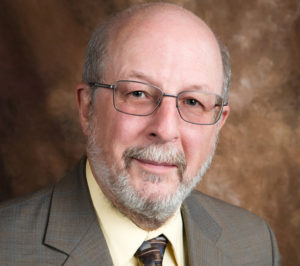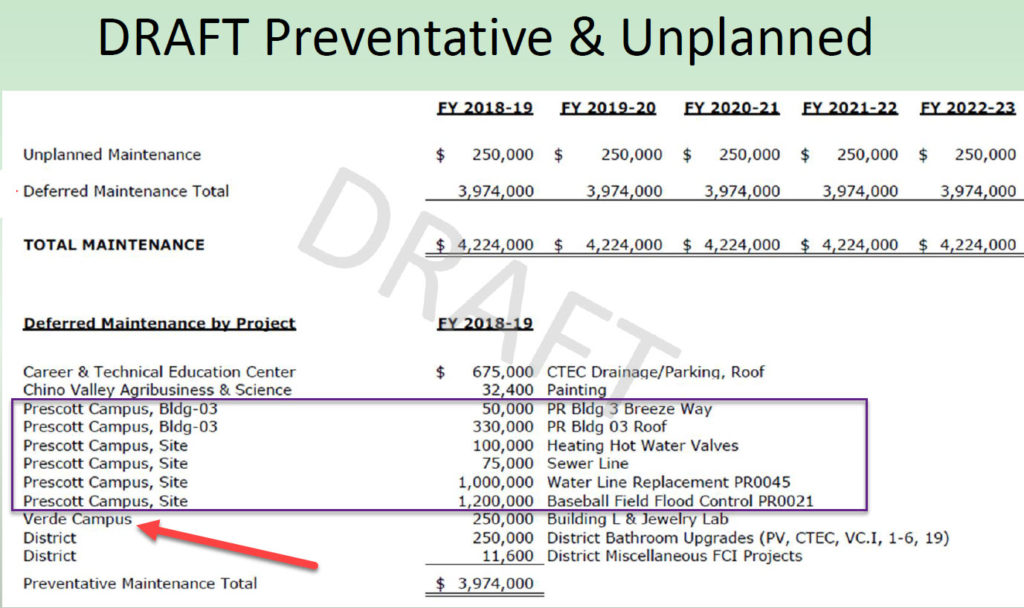VP of Instruction and Student Development retires January 26, 2020

Dr. Ron Liss
Yavapai Community College President Dr. Lisa Rhine announced at the October 8, 2019 District Governing Board meeting that Dr. Ron Liss was retiring as Vice President of Instruction and Student Development. His retirement date was set at January 26, 2020. Upon retirement, his position will be temporarily filled by Dr. Diane Ryan. She is the College’s current Vice President of Strategic Initiatives.
Dr. Liss joined Yavapai Community College in 2016. He oversees academic degree and certificate programs, the College library, instructional support, teaching and e-learning support, and student development.
President Rhine commented that:
“During my short time working with Ron, I was able to see the positive and transformational impact that he has had on the College’s academic offerings and support services. Many of our programs would not be where they are today without Ron’s leadership,” she said. “I wish him nothing but the best in retirement. Yavapai College will truly miss him.”
Upon retirement, Dr. Liss plans to spend more time with his wife, children, and grandchildren, as well as pursue many of his personal passions and plans to stay in the Yavapai community looking for the right volunteer opportunities.
Sources: Announcement made at Yavapai College District Governing Board meeting October 8, 2019; also, https://www.signalsaz.com/articles/yavapai-college-vice-president-of-instruction-and-student-development-dr-ron-liss-announces-retirement/.
 In 2000 the voters in the Community College District approved a $69.5 million bond issue. The Bond provided revenue for Community College renovation and expansion throughout the County. Included in that bond issue was a promise from the Community College to set aside revenue to construct and support a major CTE training facility on the Verde Campus.
In 2000 the voters in the Community College District approved a $69.5 million bond issue. The Bond provided revenue for Community College renovation and expansion throughout the County. Included in that bond issue was a promise from the Community College to set aside revenue to construct and support a major CTE training facility on the Verde Campus. The Yavapai Community College District Governing Board unanimously selected Dr. Lisa Rhine as the 10th President of Yavapai College Thursday. According to reports,the vote for Dr. Rhine was unanimous.Dr.Rhine is currently the Provost and Chief Operating Officer of the Chesapeake Campus, including the Regional Automotive Center and the Tri-Cities Center, at Tidewater Community College in Virginia. She brings a background of 30 years of high education experience to the job.
The Yavapai Community College District Governing Board unanimously selected Dr. Lisa Rhine as the 10th President of Yavapai College Thursday. According to reports,the vote for Dr. Rhine was unanimous.Dr.Rhine is currently the Provost and Chief Operating Officer of the Chesapeake Campus, including the Regional Automotive Center and the Tri-Cities Center, at Tidewater Community College in Virginia. She brings a background of 30 years of high education experience to the job. arbie Duncan, former Assistant Dean of Student Services, asked the Governing Board at its October meeting to delay a decision on a new College president until January. She argued that if the election changes the composition of the Board, the newly elected members should participate in the final selection of the president. Under the present scheme as announced by the College, the current Board members will make the final selection of a College president regardless of the outcome of the November election.
arbie Duncan, former Assistant Dean of Student Services, asked the Governing Board at its October meeting to delay a decision on a new College president until January. She argued that if the election changes the composition of the Board, the newly elected members should participate in the final selection of the president. Under the present scheme as announced by the College, the current Board members will make the final selection of a College president regardless of the outcome of the November election.

 As you may recall, the multimillion dollar lawsuit between the former director of aviation programs at Yavapai College, Dan Hamilton, and the College is headed for a jury trial. If it is not settled, the jury will be asked to decide whether the College took sufficient steps to inform the VA about how they were calculating the 85/15 rule. Hamilton alleges that Yavapai College and its airplane program partner, NorthAire Aviation, violated the Veteran’s Administration funding rule that limits VA beneficiary enrollment to 85% in any program. (In other words, the program must have at least 15% of its enrollees as civilians.)
As you may recall, the multimillion dollar lawsuit between the former director of aviation programs at Yavapai College, Dan Hamilton, and the College is headed for a jury trial. If it is not settled, the jury will be asked to decide whether the College took sufficient steps to inform the VA about how they were calculating the 85/15 rule. Hamilton alleges that Yavapai College and its airplane program partner, NorthAire Aviation, violated the Veteran’s Administration funding rule that limits VA beneficiary enrollment to 85% in any program. (In other words, the program must have at least 15% of its enrollees as civilians.)